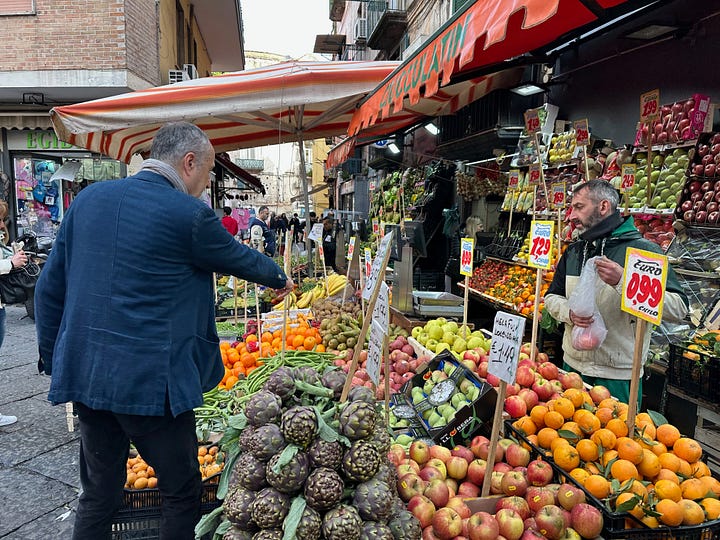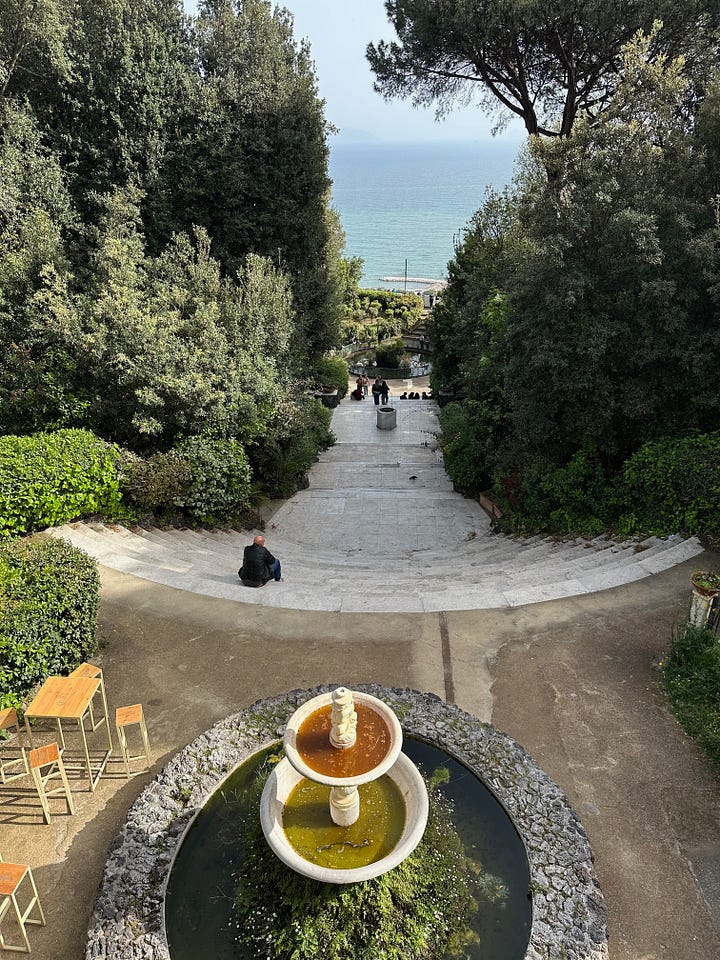How the Minnesota Star Tribune did in a weekend what took the New York Times years
The Minnesota Star Tribune built an AI lab that benefits not only themselves but also other local news outlets - Tool of the week: Perplexity Pro travel guide
At the wonderfully inspiring International Journalism Festival in Perugia (my first time back since 2016) I had the pleasure to talk to Aron Pilhofer about the Minnesota Star Tribune’s AI strategy. Aron is Chief Product Officer at Star Tribune Media Company, Minnesota’s largest media company, and a team member of the AI Lab. He is also co-founder of the Sigma Awards, a competition to celebrate the best data journalism from around the world, and the journalism organizations Hacks/Hackers and Document Cloud. The following post is compiled from what Aron told me and what he said on this panel: At the cutting edge of local news: hear from the innovators making things work.
The AI Lab Team and Structure
The Star Tribune AI Lab began as an internal initiative in late 2024 but expanded after receiving $500,000 in funding and API credits from OpenAI through the Lenfest Institute, allowing it to grow from two to three team members. The lab now consists of Aron Pilhofer, lab leader Chase Davis (a former Star Tribune managing editor who previously led the Interactive Department at the New York Times and worked there with Aron), and an engineer. The lab operates within the product and engineering teams.
Unique Collaborative Approach
The Minnesota Star Tribune’s AI Lab stands out primarily through its commitment to open collaboration and industry support. Unlike many AI initiatives that develop proprietary tools, the Star Tribune is actively open-sourcing its technology. Their flagship project, called Agate*, is being developed not just for internal use but with the explicit goal of sharing it with the broader journalism industry, particularly smaller local publishers.
This collaborative philosophy is embedded in the Star Tribune’s “Greater Minnesota initiative,” which focuses on partnering with local publishers to build a mutually sustainable ecosystem. The AI Lab recognizes that smaller local publishers lack the engineering resources to develop AI tools independently, making the Star Tribune’s open-source approach particularly valuable.
Agate: Technical Innovation and Validation Focus
The AI Lab’s technical approach is distinctive in its emphasis on validation and accuracy. The Agate system employs a sophisticated pipeline workflow with four key stages:
Input stage: Content ingestion
Processing stage: AI analysis and extraction
Validation stage: Verification of AI outputs
Output stage: Structured data delivery
The validation stage is particularly crucial, featuring automated checks to ensure the AI isn’t “making things up”. The system flags potential inaccuracies for human review while automatically approving high-confidence extractions. For example, when processing recipes, the system compares each ingredient and step the AI identifies against the original text to verify accuracy, flagging only potentially problematic items for human review.
Agate is trained to know context
Agate leverages Large Language Models (LLMs) for advanced entity extraction, with a particular strength in understanding context. For example, it can infer relationships between locations and events that aren’t explicitly stated in the text.
What does this mean practically? Aron explains: “LLMs and specifically Agate can understand why a place is referenced. So if you’re trying to say, show me all of the car crash stories where an accident happened, the LLM is really good at inferring location, even when the location isn’t explicit.”
In another example, Agate surfaced a relevant story by making the connection between an NBA basketball player who graduated from the private school Benilde-St. Margaret's and a specific relevant locality. The LLM was able to infer on its own that this school is based in the Minneapolis suburb St. Louis Park although that wasn’t mentioned anywhere in the story.
Building valuable databases from unstructured content
If you’ve read this far, you’re probably wondering what all of this has to do with the New York Times and how the Star Tribune was able to build something much faster than the NYT with its much larger resources. One impressive demonstration of Agate’s capabilities was creating a structured recipe database: “In a weekend, we were able to replicate what took the New York Times years and millions of dollars to do.”
The system extracted ingredients and steps from recipes, converting them into structured JSON format with validation to ensure accuracy. While they haven’t determined the final product for this database yet, it demonstrates the technology’s potential.
Of course, the NYT started its cooking app in 2014 with much less advanced technology and nevertheless built a launch base of more then 16,000 recipes, many of them from unstructured data from the print archive. Today, the NYT Cooking app has more than 23,000 recipes, more than a million stand-alone subscribers (plus “All Access” digital subscribers) and is a huge revenue driver.
Practical Applications and Future Vision
The Star Tribune AI Lab is developing tools with specific practical applications, including:
Creating hyper-local newsletters that would otherwise be too resource-intensive to produce manually
Building a knowledge graph that provides a platform for developing additional tools
Developing entity extraction capabilities that understand context beyond simple identification
Creating structured data from unstructured content (as demonstrated with their recipe database experiment)
The Star Tribune plans to transform Agate from an engineer-focused tool into a more accessible platform with specific inputs and outputs, such as embeddable maps with data extracted from news stories. This platform approach aims to make AI tools accessible to publishers without technical expertise.
While initially focused on Minnesota through partnerships with the Minnesota Newspaper Association and local publishers, the technology could expand beyond state boundaries. The team expects to release a more accessible version of Agate in 2025, with local publishers already showing high interest during recent meetings.
Why is the Star Tribune’s AI Lab relevant for the news industry?
Agate’s emphasis on validation addresses one of the primary concerns about AI in journalism - accuracy and hallucination prevention
Being able to make non-obvious location-based connections elevates the value of local news publishers’ archival material
Re-surfacing and structuring timeless evergreen content like recipes, games and - more specifically for publishers - local history and local sports team history enables new verticals that have the potential to be monetized, e.g. as premium add-ons to subscriptions or as stand-alone apps.
By creating AI Labs, on their own or collaboratively, local news organisations can seize the moment and get ahead of the curve in terms of AI developments. Or in the words of Aron Pilhofer: “Innovation often kind of happens to us from outside and so this is one of those rare opportunities which enables us early in the life cycle of this technology to start driving innovation that helps us."
*Agate is newspaper lingo. It’s the name of the tiny type font commonly used to display statistical data or legal notices.
Tool of the week: Perplexity Pro travel guide
My partner and I are spending a week in Naples right now, half work and half vacation. Since I had never been in this city or region before and had no time whatsoever to read any travel guide books or websites, I decided to let Perplexity Pro do the work for me. I did know that we wanted to visit excavation sites in Pompeji, walk around the famous historic town center and indulge in Neapolitan cuisine. Other than that, I was open to suggestions.





I used the prompts “what are the best sights to see in Naples that are authentic and not overly touristy” and Give me 10 authentic Neapolitan restaurants in Naples Italy, and the 10 best coffee shops, all in Naples, Italy . Focus on authenticity, not on popularity with American tourists. Perplexity came up with some surprisingly useful tips. Next, in a third query, I asked it to identify pubs with IPA on tap. But this time, I didn’t use the modifier “non American touristy”, because when it comes to beer - that’s exactly what I am.
Next time you need travel advice, try prompting your favorite LLM.





